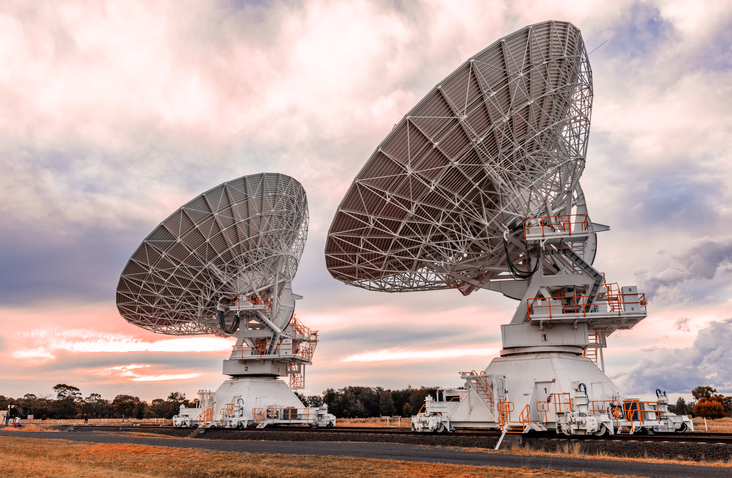The five-domains update

Sea state
Australian assembly of the first Multi Ammunition Softkill System (MASS) shipsets for the Royal Australian Navy began this month at Rheinmetall’s Military Vehicle Centre of Excellence in Redbank, Queensland. The ship protection system, which uses launched decoy projectiles to defeat incoming sensor-guided missiles, will be integrated into Australia’s ANZAC-class frigates and Hobart-class destroyers. The system has already been operated by New Zealand’s two ANZAC-class frigates for about 10 years.
Last week, Defence announced upgrades to the main transmitter at the Harold E Holt Communication Station near Exmouth, Western Australia—the first major overhaul since the facility was commissioned by the US navy in 1967. The Australian-operated very-low-frequency antenna array contributes to US nuclear deterrent through long-range communication with US ballistic-missile submarines. Maintenance will be carried out on a rolling schedule, to ensure the station remains in operation.
Flight path
China’s J-36 stealth fighter was back in the sky for its second test flight, this time flying solo. The test flights seemingly reveal two unique features: a diverterless supersonic inlet design that assists in regulating air flow and a three-engine layout. Both features suggest supersonic speed capabilities. The timing of its debut signals China’s readiness to challenge the United States’ aerial dominance in the Asia-Pacific region. Last weekend the US made a surprise announcement awarding the Next Generation Air Dominance contract to Boeing for the F-47 fighter jet.
Canada will become the first buyer of Australia’s Jindalee Operational Radar Network (JORN). The world-leading radar technology system can detect and track targets thousands of kilometres away by refracting high frequency radio signals. Its sale could be Australia’s biggest defence export to date. The surprise announcement from new Canadian Prime Minister Mark Carney comes despite the US’s long-held interest in acquiring the technology.
Rapid fire
The first two of 42 planned High Mobility Artillery Rocket Systems (HIMARS) vehicles were delivered to Australia this week. The Albanese government accelerated the acquisition of the US-made precision-strike platform. The systems will be fielded by the 10th Fires Brigade and improve army capabilities. The delivery follows the signing of a memorandum of understanding between Australia and the US in March for co-assembly of Guided Multiple Rocket Launch System (GMLRS) munitions for use with HIMARS platforms. Assembly will begin at Orchard Hills in Western Sydney later this year.
At the end of February, Defence Minister Richard Marles inspected the first batch of the Australian army’s new AS9 self-propelled artillery and AS10 armoured ammunition resupply vehicles. The South Korean designs will be manufactured by Hanwha at its Armoured Vehicle Centre of Excellence at Avalon. Australian supply chain partners are already producing components to support delivery. The AS9 is the army’s first self-propelled artillery piece. The army currently operates M777 towed artillery.
Final frontier
An Australian-made nanosatellite was successfully launched into low-Earth orbit as part of Defence’s Buccaneer project. Weighing less than ten kilograms, Buccaneer Main Mission was a collaboration between Adelaide-based Inovor Technologies and the Defence Science and Technology Group. Over its 12-month operational lifespan, the nanosatellite will gather data on how radio waves propagate through the upper atmosphere, potentially improving Australia’s over-the-horizon radar capabilities.
At the end of last month, US-based Varda Space Industries retrieved its Winnebago-2 space capsule after re-entry over remote South Australia. The landing site, Koonibba Test Range, is about 500km north-west of Adelaide. It is operated by Australian firm Southern Launch in partnership with the Koonibba Community Aboriginal Corporation. As the first commercial return to a commercial spaceport anywhere in the world, this is a landmark moment for Australia’s space industry.
Wired watchtower
Microsoft has released research showing that Russian state-sponsored hacking groups are expanding cyber operations to target critical infrastructure and governmental organisations in Western countries, including Australia. The BadPilot campaign is associated with Russian state actor Seashell Blizzard, and intrusions have targeted sectors such as energy, telecommunications and defence manufacturing. Hackers exploit known but unpatched vulnerabilities in widely used IT management and remote access software platforms. Once they gain access, they maintain their presence in compromised networks using legitimate remote-access tools such as Atera Agent and Splashtop remote services.
The Australian Securities and Investments Commission is taking fixed-income broker FIIG Securities to court after a 2023 cyberattack. The attack affected FIIG’s entire IT network and resulted in the theft of approximately 385 gigabytes of confidential data, potentially exposing the personal information of around 18,000 clients. ASIC alleged that FIIG failed to update and patch its software and lacked sufficient cybersecurity measures, leaving its systems exposed to intrusion and data theft. This breach contributed to growing concerns over Australia’s cybersecurity resilience and was part of a broader pattern of intrusions, including those attributed to state-backed groups.










